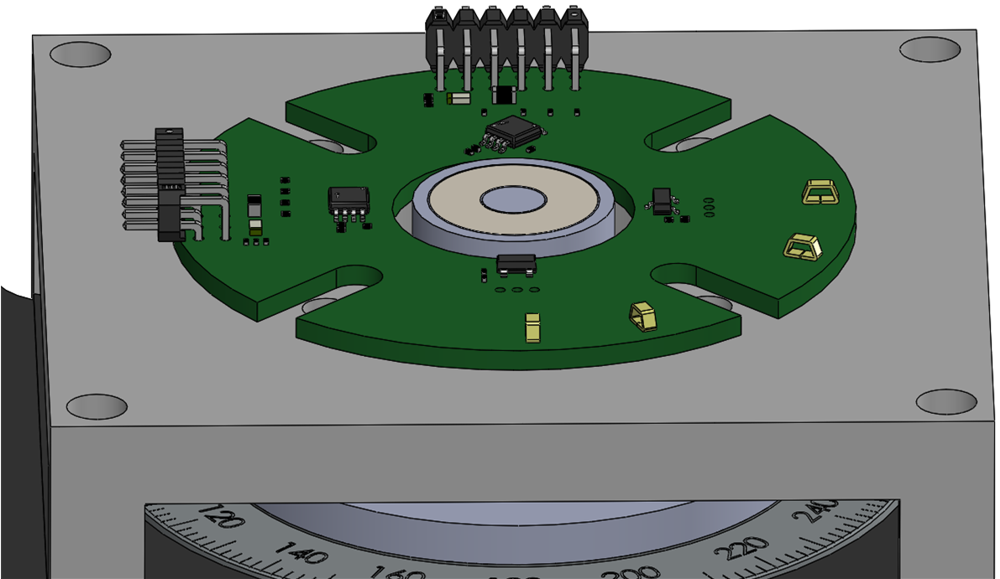JAJU837 March 2022
3.3.4 TMAG5170 Off-Axis
A third option represents every other possible location about the magnet. While the expected inputs for on-axis and in-plane were purely two dimensional, it is normal for the off-axis case to have field components in all three directions.
With the versatility of TMAG5170 to detect 3D fields, it is possible to use various sensor orientations and use any two vector components which are 90° out of phase. In this case XZ field components were used to calculate angular position.
The observed error for this alignment were similar to what was observed with the In-Plane Configuration.
 Figure 3-16 Off-Axis Configuration
Figure 3-16 Off-Axis ConfigurationOff-Axis Mechanical Angle Error shows the resulting error for both a direct arctangent calculation and for the CORDIC output after applying the harmonic data.
| HARMONIC | αi | βi |
|---|---|---|
| 1 | –6.97 | –0.55 |
| 2 | –0.05 | 1.12 |
| 3 | –0.15 | 0.07 |
| 4 | –0.13 | –0.13 |
| 5 | 0.02 | 0.03 |
Off-Axis Calibrated Angle Error shows the resulting error after applying the harmonic data.